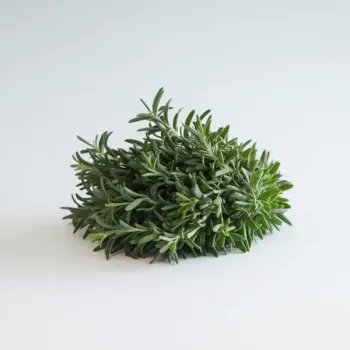Marjoram and Oregano are related but distinct herbs used in cooking. Marjoram offers a sweet, floral taste, while Oregano provides a strong, peppery flavor. They enhance different dishes, from light meats and soups with Marjoram to robust sauces and meats with Oregano.

Marjoram is a delicate herb known for its sweet, floral, and slightly citrus flavor. It's a member of the mint family and is commonly used in European dishes.

Oregano is a robust herb with a peppery bite and a zesty punch. It belongs to the same family as Marjoram but is often associated with Italian and Mediterranean cuisines.
While both herbs share a common family, Marjoram is milder and has a sweeter flavor, whereas Oregano is more pungent and has a stronger, more peppery taste. The texture of Marjoram is also softer compared to the slightly more coarse texture of Oregano. In terms of source, Marjoram is often cultivated in more temperate climates, while Oregano thrives in a Mediterranean environment.

Your ultimate Recipe Box, Meal Planner, and Cooking Class all in one
In tomato-based sauces, Marjoram adds a subtle warmth and sweetness, complementing mild dishes like marinara sauce without overpowering other flavors. Oregano's bold flavor makes it a go-to herb for robust tomato sauces, such as Bolognese or pizza sauce, where it contributes to a deeper, more complex flavor profile.
Marjoram shines in lighter meat dishes like chicken or turkey, where its sweet and floral notes can enhance the natural flavors of the meat without being overpowering. Oregano is ideal for hearty meat dishes such as lamb, beef, or pork, especially when grilling or roasting, as it can stand up to strong flavors and high heat.
Marjoram can be added to delicate soups and stews, such as vegetable or chicken soup, to infuse a light, herby flavor without overwhelming other ingredients. For more robust soups and stews like minestrone or beef stew, Oregano can contribute a depth of flavor that complements the richness of the dish.
Both Marjoram and Oregano are low in calories and rich in antioxidants, vitamins, and minerals.
| Nutrient | Oregano ( per Teaspoon (dried) ) | Marjoram ( per Teaspoon (dried) ) |
|---|---|---|
| Fat | 0.1g | 0.0g |
| Sodium | 0mg | 0mg |
| Calcium | 29mg | 8mg |
| Protein | 0.2g | 0.1g |
| Calories | 5 | 2 |
| Carbohydrates | 1.2g | 0.5g |
Marjoram can be used as a substitute in Italian dishes for a milder flavor, but it will not provide the same robustness as Oregano.
Oregano is the preferred choice for traditional Mediterranean flavor due to its strong, peppery profile.
Oregano is typically better for tomato sauces as it offers a more pronounced flavor that complements the acidity of tomatoes.
When substituting Marjoram for Oregano, start with half the amount and adjust to taste, as Marjoram is milder.
Dried Marjoram and Oregano can be used interchangeably in a pinch, but expect a difference in flavor intensity and character.